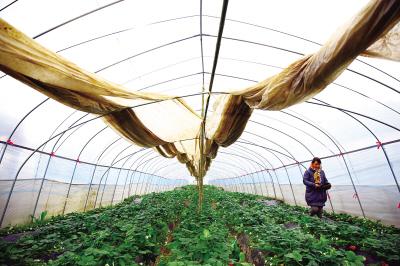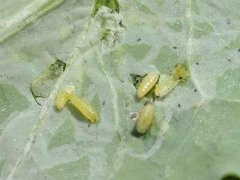Measures against cold and freezing of crops: what are the key points of the cold prevention plan for crops?
According to the Central Meteorological Bureau, low temperatures of about 11 degrees Celsius are more likely to occur in open areas in central China. In order to avoid severe cold damage and cause crop losses, special appeal, strong cold air mass attack, various cultivated crops and aquaculture should take early cold prevention management measures.

First, fruit crops: setting up a windbreak net in the north of the orchard can prevent the cold wind from blowing directly and reduce the impact of low temperature. The grape should be fully irrigated after pruning and sprouting in the first stage in the open air, and the weak sprouts can be thinned as soon as possible to concentrate nutrients to promote new shoot growth. After grafting, high-grafted pears can be covered with small plastic bags to protect scions. The flower ear and fruit of loquat can be protected by bagging or mulching to avoid being directly affected by low temperature. For orchards prone to frost damage, sprinkler irrigation equipment can be used to defrost and increase moisture in the air to reduce the damage rate, or appropriate irrigation of groundwater with higher temperature can be used to prevent a sharp drop in ground temperature from harming the roots.
2. Vegetable crops: at present, cold-tolerant vegetables grown in winter are mainly cultivated in the central region, and the plants are less affected by the cold current, but it is still recommended to carry out field irrigation and border covered with plastic cloth and rice straw to maintain soil temperature. or set up a windproof net in the north of the vegetable garden to reduce the cold wind. Cruciferous vegetables such as cabbage, Chinese cabbage and radish are prone to bolting in the low temperature period. it is suggested that transplanting or sowing can be delayed to avoid small bolting. Fruits and vegetables in young fruit stage can be bagged to avoid direct contact with low temperature. Protected vegetable growers can lower the side cover to increase the temperature in the facility, and then lift the plastic cloth slightly after the temperature rises, so as to avoid diseases caused by high temperature and humidity.
Third, flower crops: open-air cultivation of cut flowers, such as lily, gladiolus, chrysanthemum, unicorn grass, etc., the border should be covered with grass mat, plastic cloth or rice stalk to slow down the decline of soil temperature, or strengthen the north windbreak net to avoid the direct attack of cold current. In the cultivation of cut flowers and potted flowers in facilities such as Platycodon grandiflorum, chrysanthemum, African chrysanthemum, roses and potted flowers, it should be confirmed that the vents are covered and sealed to avoid growth stagnation caused by low temperature; when the temperature picks up, the ventilation of the facilities should be adjusted in time to avoid damage caused by accumulation of high temperature and high humidity.
- Prev

Plain monitor lizard breeding course: how to raise plain monitor lizard? Basic feeding of plain monitor lizard
Do you like plain monitor lizards? Do you know how to breed it? The following is to introduce you to the breeding methods of plain monitor lizards. Environment: the plain monitor lizard comes from the African prairie. They like to climb and swim less. But they still need a big swimming pool. I loved it when I was young.
- Next

The harmful symptoms of floral leafminer, what are the larvae of leafminer?
What is the harmful habit and form of leafminer? Do you know? If you want to know, let's take a look. For harmful habits: the adults lay eggs in the mesophyll, and the larvae first feed under the smooth epidermis of the leaves.
Related
- A one-day flower show brings 130 million yuan in orders! Nanhai, this Phalaenopsis exhibition is amazing
- What do the flower language and meaning of Lutheran tree mean? Precautions for planting Lutheran tree
- Encounter Chaoshan Kongfu tea, not without this cup of Phoenix single clump
- The durian market in Vietnam and Thailand is flooded. The price of imported durian has plummeted by 30-40% in a month.
- Shanghai solved the problem of local vegetable supply by planting 80,000 mu of green leafy vegetables.
- Wageningen University has become the best agricultural university in the world for the seventh time in a row.
- The strongest export season of South African grapes is full of challenges, with exports to Russia falling sharply by 21%.
- Sri Lanka is on the verge of bankruptcy, "Tea for debt" Organic Agriculture Revolution aggravates the Food crisis?
- Turning waste into earthworm manure and worm manure into organic fertilizer-A new choice for auxiliary farming
- Organic rice growers shoulder the responsibility of nurturing agricultural talents! Yinchuan Sustainable Farm with Organic Life Camp

